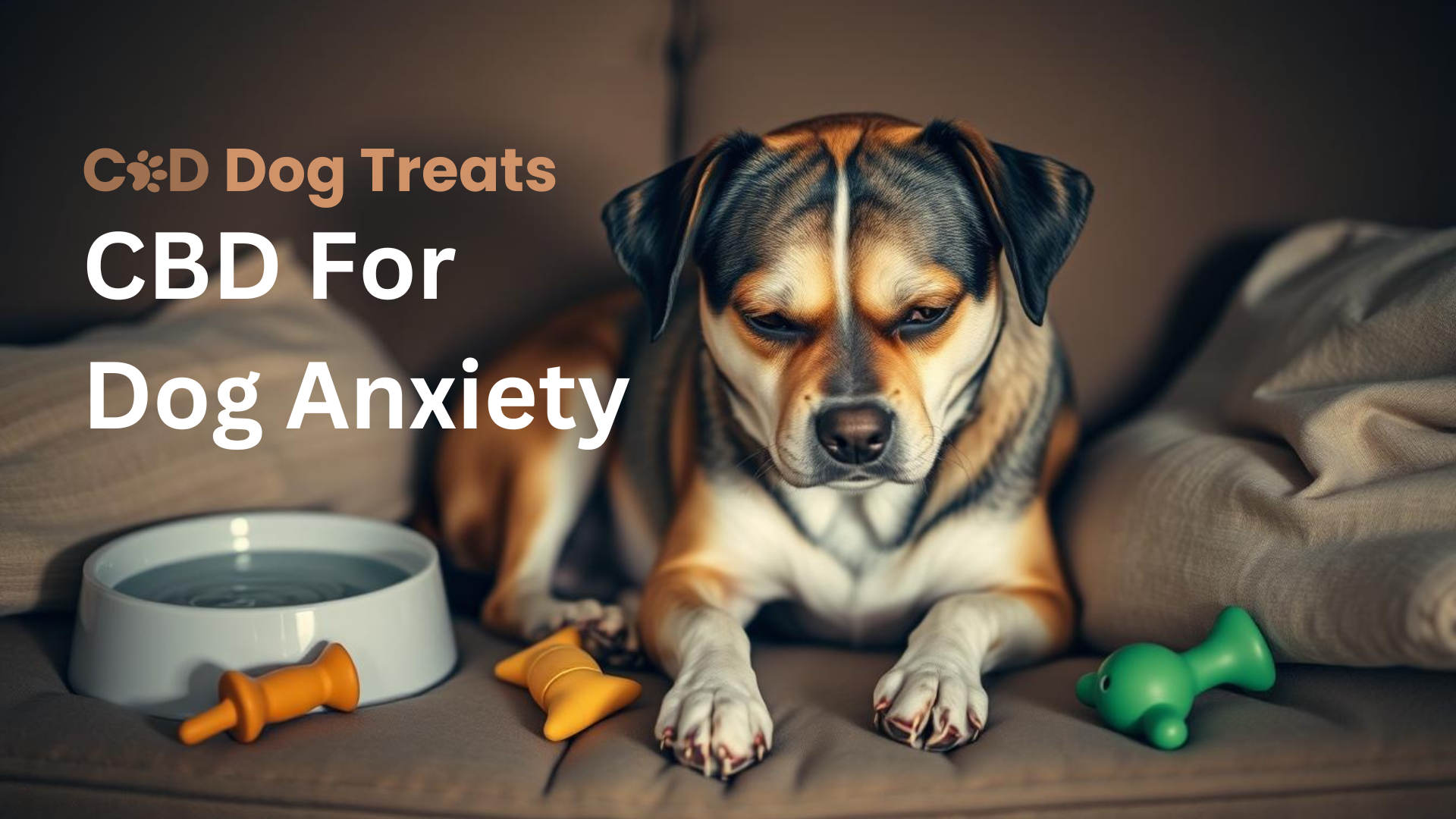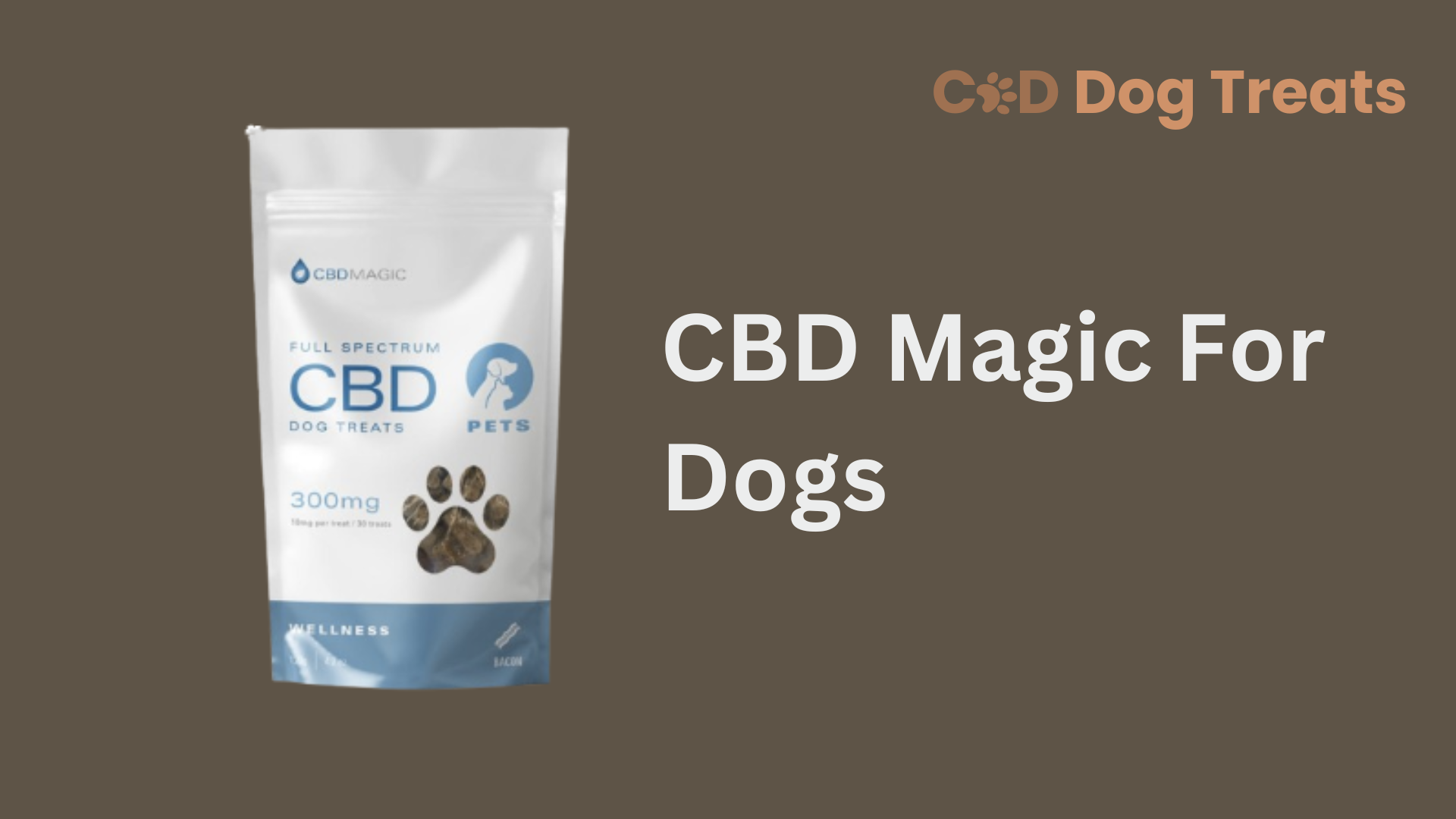
Side Effects of CBD For Dogs
- CBD Dog Treats
- Last Updated:

Key Takeaways
- CBD may cause side effects in dogs, such as dry mouth, drowsiness, and lethargy, especially if not dosed properly.
- Accurate dosage and administration are crucial to reducing the risk of adverse reactions and ensuring safe use.
- Caution is necessary when using CBD in dogs with pre-existing conditions or if they are on other medications, as interactions may occur.
- Evaluating the quality and safety of CBD products for pets is essential; always choose reputable, third-party tested options.
- Close monitoring of your dog for any signs of adverse reactions is important when introducing CBD into their routine.
POSSIBLE SIDE EFFECTS MAY INCLUDE
1. Thirstiness
One of the most common side effects of CBD in dogs is increased thirst, even in cooler indoor environments. This side effect is similar to what some humans experience with CBD. However, it is easily manageable by ensuring your dog has constant access to fresh water. Without enough hydration, your dog may start drooling as a sign of dehydration, so keeping water available is essential.
2. Drowsiness or Sedation
CBD can have calming effects on dogs, which might lead to increased relaxation or sleepiness. This is especially common at higher doses and may be beneficial for dogs with anxiety but could interfere with their energy levels if excessive.
3. Dry Mouth
CBD may reduce saliva production in dogs, leading to increased thirst. You might notice your dog drinking more water than usual after consuming CBD.
4. Low Blood Pressure
CBD has the potential to cause a temporary drop in blood pressure, which may make your dog feel slightly dizzy or unsteady. This effect is usually mild and short-lived.
5. Diarrhea
Some dogs might experience loose stools or diarrhea, particularly when they are new to CBD or if the product contains certain carrier oils that upset their stomach.
6. Changes in Appetite
CBD can influence a dog’s appetite, either increasing or decreasing it. These changes vary from dog to dog and may depend on the dosage.
7. Lethargy
CBD’s calming properties might result in a lack of energy or sluggishness, especially if the dose is too high for the dog’s weight or tolerance level.
8. Allergic Reactions
Although rare, some dogs might exhibit allergic reactions to CBD or its ingredients. Signs may include itching, hives, swelling, or other symptoms of irritation.
9. Vomiting
Dogs with sensitive stomachs might vomit after consuming CBD, particularly if they have difficulty tolerating the oil or other additives in the product.
10. Interaction with Medications
CBD can interact with other medications, especially those metabolized by the liver. This could alter the effectiveness of certain treatments or increase the risk of side effects. Always consult your veterinarian if your dog is on medication.
What Is CBD?
CBD, or cannabidiol, is a naturally occurring compound found in the cannabis plant, specifically in hemp. Unlike THC (tetrahydrocannabinol), another well-known compound in cannabis, CBD is non-psychoactive, meaning it doesn’t cause a “high.” Instead, it interacts with the body’s endocannabinoid system (ECS), which plays a key role in maintaining balance and regulating functions such as mood, sleep, appetite, and immune response.
CBD products for dogs are typically derived from hemp plants, ensuring minimal THC content (less than 0.3%), making them safe and legal for pets in many regions.
How Does CBD React With Dogs?
CBD interacts with the ECS in dogs much like it does in humans. The ECS consists of receptors (CB1 and CB2) located throughout the body:
- CB1 receptors are found mainly in the brain and central nervous system, affecting mood, memory, and coordination.
- CB2 receptors are located in the immune system and peripheral tissues, influencing inflammation and immune responses.
When a dog consumes CBD, it binds to these receptors and helps regulate the ECS, promoting balance within the body. Here’s how CBD can affect dogs:
- Managing stress and anxiety.
- Reducing inflammation and pain.
- Supporting recovery from illness or injury.
- Regulating appetite and digestion.
- Enhancing immune system function.
The Endocannabinoid System in Dogs
CBD (cannabidiol) interacts with the ECS differently than the body’s natural endocannabinoids:
- Indirect Activation: Unlike THC, which binds directly to CB1 and CB2 receptors, CBD doesn’t attach directly. Instead, it influences the receptors indirectly, enhancing the ECS’s ability to maintain balance.
- Enzyme Inhibition: CBD can inhibit FAAH, which slows the breakdown of anandamide, allowing it to stay active longer and promote its calming and pain-relieving effects.
- Receptor Modulation: CBD also interacts with other receptors outside the ECS, such as serotonin receptors, contributing to its anti-anxiety and anti-inflammatory effects.
How to Avoid Side Effects of CBD with Your Dog
To avoid side effects of CBD in your dog, it’s essential to start with a low dose and gradually increase it while monitoring your pet’s response. (Read More: Introducing CBD Dog Treats)
Begin with the lowest recommended dosage based on your dog’s weight, and observe how they react over several days before making any adjustments.
Always choose high-quality CBD products specifically formulated for pets, ensuring they are third-party tested for purity and potency, THC-free (less than 0.3%), and free from harmful additives or contaminants.
Carefully check the ingredient list to avoid products with artificial flavors, preservatives, or carrier oils that may upset your dog’s stomach.
Administering CBD with food can help reduce the risk of gastrointestinal issues, such as nausea or diarrhea, while also improving absorption.
Choose a method of administration that works best for your dog, whether it’s oils or CBD dog treats, as some methods may be better tolerated than others.
It’s also important to monitor your dog closely for any signs of discomfort, such as drowsiness, vomiting, or diarrhea.
If side effects occur, reduce the dosage or stop use and consult your veterinarian.
Signs Of A Bad Reaction
While CBD is generally safe for dogs when given appropriately, it’s important to be mindful of potential side effects and watch for signs of an adverse reaction. Close monitoring of your dog is essential to ensure their well-being when using CBD products.
Common signs of CBD overdose in dogs may include:
- Excessive drowsiness or lethargy
- Dry mouth and increased thirst
- Gastrointestinal issues, such as vomiting or diarrhea
- Lack of coordination or ataxia
- Tremors or, in rare cases, seizures
If you notice any of these symptoms, discontinue use and consult your veterinarian immediately.
Choosing a Reputable Brand
When choosing a CBD product for your dog, consider several key factors:
- Third-Party Lab Testing: Ensure the product has undergone rigorous third-party laboratory testing. This verifies the purity, potency, and safety of the CBD and other ingredients.
- Ingredient Quality: Choose CBD products with high-quality, organic, and non-GMO ingredients. This includes the hemp source used for extraction.
- Certification and Transparency: Opt for brands that are transparent about their manufacturing processes and extraction methods. Look for relevant certifications, such as USDA organic or Good Manufacturing Practices (GMP).
- Dosage and Administration Guidelines: Review the product’s dosage recommendations and instructions. This ensures you administer the correct amount for your dog’s size and needs.
FAQ: Side Effects of CBD for Dogs
What is CBD, and how does it affect dogs?
CBD, or cannabidiol, is a compound derived from the hemp plant that offers potential therapeutic benefits for dogs. It interacts with the endocannabinoid system, which plays a key role in regulating various functions, including pain relief, inflammation reduction, and anxiety management.
What are the common side effects of CBD for dogs?
Common side effects of CBD in dogs may include dry mouth, increased thirst, drowsiness, and lethargy. These effects are typically mild and may diminish over time or with dosage adjustments.
What is the proper dosage for CBD in dogs?
The appropriate CBD dosage for dogs varies based on factors such as size, age, and overall health. It’s advisable to start with a low dose and gradually increase it while monitoring your dog’s response. Always adhere to the product instructions and consult your veterinarian for tailored dosage recommendations.
Is CBD safe for all dogs?
While CBD is generally considered safe for most dogs, individual responses can vary. Dogs with specific health conditions, pregnant or nursing dogs, or those on certain medications may not be suitable candidates for CBD. Always consult your veterinarian before starting any new supplement.
How long does it take for CBD to work in dogs?
The onset of CBD effects can vary, but many dogs may begin to feel the effects within 30 minutes to 2 hours after administration. Factors such as the dog’s metabolism, the form of CBD used, and the dosage can influence how quickly it takes effect.
Search
Latest Posts
Categories




